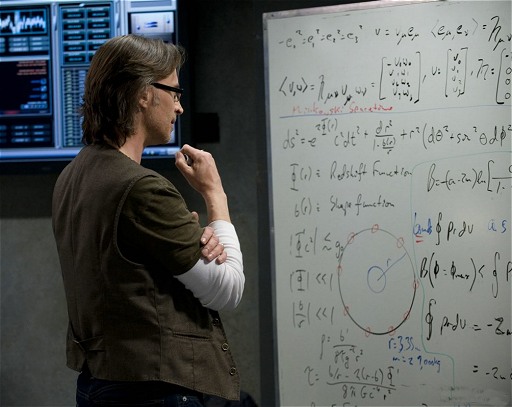Filmmaking: outsource it
These past 2 weeks there were quite some news about Netflix and YouTube stepping up their game towards Big Content. Netflix paid $100mil to get a Kevin Spacey drama exclusively, while YouTube is also pledging another $100mil to create original content, while creating a number of “live” channels on the side.
All this sounds good, but then I read about Netflix paying “Mad Men” $1mil per episode in order to get the rights to stream it. Personally, I found that amount of money crazy. Yes, “Mad Men” is one of the best show on TV, but these are older episodes we’re talking about, that have already been shown many times before worldwide, they’re out on DVD etc. Considering that an episode of “Mad Men” costs about $2.3mil, I find the amount of money Netflix paid, excessive. TV channels from other countries when license such a show don’t pay nearly as much.
And then there’s the $100mil Netflix paid for Spacey’s drama. That money was only partially for production costs, they were mostly for auctioning which channel will get the rights for it. That’s all crazy amount of money. And while Netflix now has over 20 million subscribers, in my opinion that’s not nearly enough to get access to the rest of the content out there, let alone the special deals for streaming, bandwidth and server support.
On the other hand, I see indie short films shot at a fraction of that money. Take a look at the FutureStates sci-fi short films for example, great filmmaking, high production values, for cheap (partly funded by PBS, which has no money itself to spare anyway).
All this makes me think that outsourcing is the only way to make entertainment and entertainment-creation affordable. No, I’m not looking at Canada/Vancouver, which is now almost as expensive as the US in terms of production. I’m more thinking of Mexico. Greece. Brazil. China. South Africa. Argentina. Portugal. India. Morocco.
“Dogtooth”, the Greek movie that was running for “Best Foreign Film” at the Oscars this year, was shot for 250,000 Euros. Consider that the rest four candidates cost between $3mil and $20mil. As for the most expensive Greek TV series, “The Island”, costs about 150,000 Euros per episode. Great production values, we’re not talking about cheap soaps here.
So it can be done for cheap. You just need to be at the right place, with the right crew.
If I had the capital, health and I was younger, I would start a studio in any of these mentioned countries. There are good directors and writers in these countries, but there are also a lot of them in the US/CAN/UK who are just trying to survive. Young (35 or younger) writers/directors who wouldn’t mind moving to such a country for 2-3 years of their life (a few months at a time, not the whole year). Pay wouldn’t be better than $10k per episode for the main crew. Same goes for the actors. There are a lot of quality young & unknown English-speaking US/UK/CAN/AUS/SA/IR talent out there who would jump to the opportunity (the rest of the crew would be locals), and get to see the world at the same time! Maybe a flight a year can already be paid for them, and maybe the production company can buy single-room apartments too to host the cast & crew. Such apartments in Greece don’t cost more than $300 per month, for example. The production company can easily own such buildings close to the studio.
Then, I envision tight TV series with no more than 3 seasons (up to 5 if the story warrants it only). Since the shows would broadcast back in the US, the actors have a good chance of getting popular, so when their contract ends, they will get better US-bound deals than the $10k per episode offered overseas. Still, making well over $100k per year (in some cases it would be over $160k) is better than the average American ($35k per year). I don’t see why the cast must be paid super-extraordinary salaries (e.g. the House actor who gets over $350k per episode, or Charlie Sheen who used to get nearly a million per episode). I believe that there are many unknown theater actors out there who would move abroad, offer GREAT performances, and accept these good-enough salaries.
I mean, actress January Jones recently said that she doesn’t make enough money on Mad Men. No! Really? Oh, God. She was only able to buy this house. Poor girl! 😛
So, if a series is supposed to take place in NY or LA etc, you can always get a small crew there for a few days, shoot some key but generic scenes, and then green-screen the actors in. This is how the last season of “24” was shot, that supposedly took place in NY.
As for cameras, thank God we can now get good-enough 1080p cameras, with interchangeable lenses, for under $10k. And there’s always the RED anyway.
Prop construction, post-production and CGI are all to be done overseas as well. I mean, a Greek computer professional doesn’t get more than 1400 Euros per month, sometimes it’s as low as 1000 Euros. Construction workers are very, very cheap — and capable.
With such a plan for example, I’d expect Stargate:Universe to not cost more than $500,000 per episode. It currently costs between $2.5mil and $3.5mil (average primetime show production cost is $3mil per episode in the US). With $500k cost it would not be canceled for low ratings any time soon. The writers would have had the time to tell their story.
Instead, we get Netflix trying to buy its way out of the Big Content menace by paying $100mil to Kevin Spacey. Give me a fucking break. Talk about sinking even deeper into the status quo. With $100mil I would be able to build a brand new large studio outside of Athens, build or buy apartment buildings, put together a post-production team, and get everything in place not for one, but for 10 TV series. Jeez.





